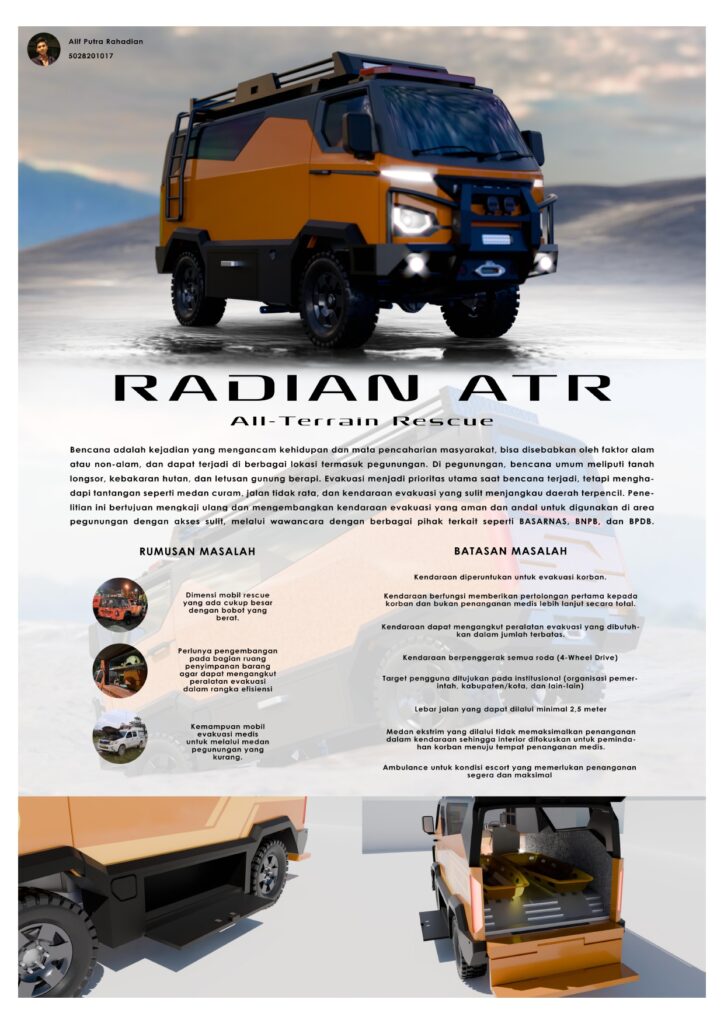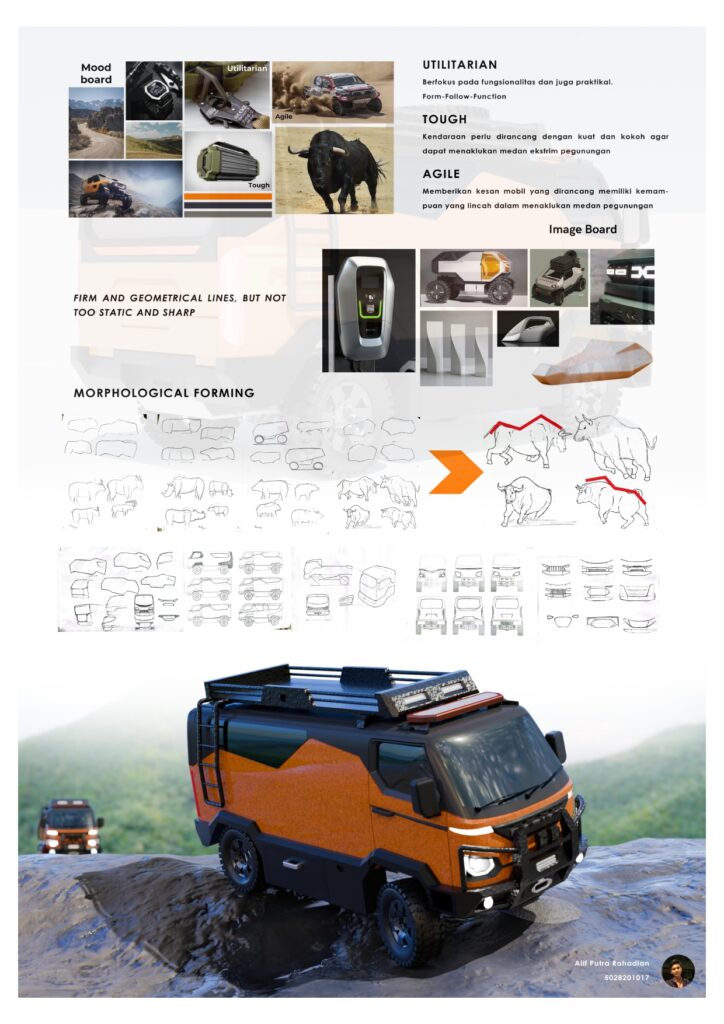Disasters are events or series of events that threaten and disrupt people’s lives and livelihoods caused by natural factors and/or non-natural factors that are detrimental to humans and the surrounding environment. Disasters can occur anywhere, including in mountainous areas. Disasters that generally occur in mountainous areas are landslides, land and forest fires, and volcanic eruptions. Evacuation of people and the surrounding environment is a top priority when a disaster occurs. However, the evacuation of people and the environment affected by disasters, especially in mountainous areas, has several challenges to face. Some of them are steep mountainous terrain, uneven roads, and the ability of evacuation vehicles to be difficult to climb when in the mountains. Existing evacuation vehicles find it difficult to reach remote areas with minimal road access. This research aims to review existing evacuation vehicles, and then design and develop evacuation vehicles that are safe, reliable, and can help with disaster evacuation, especially in mountainous areas with difficult access. The research method used is processing primary data obtained through interviews with parties involved in disaster evacuation activities such as BASARNAS (now BNPP), BNPB, BPDB, and the Fire Department. This research is also supported by secondary data from related literature. The final results of this research include reports, portfolios, technical drawings, presentation drawings, and scaled models that support the future development of this mode of transportation.


